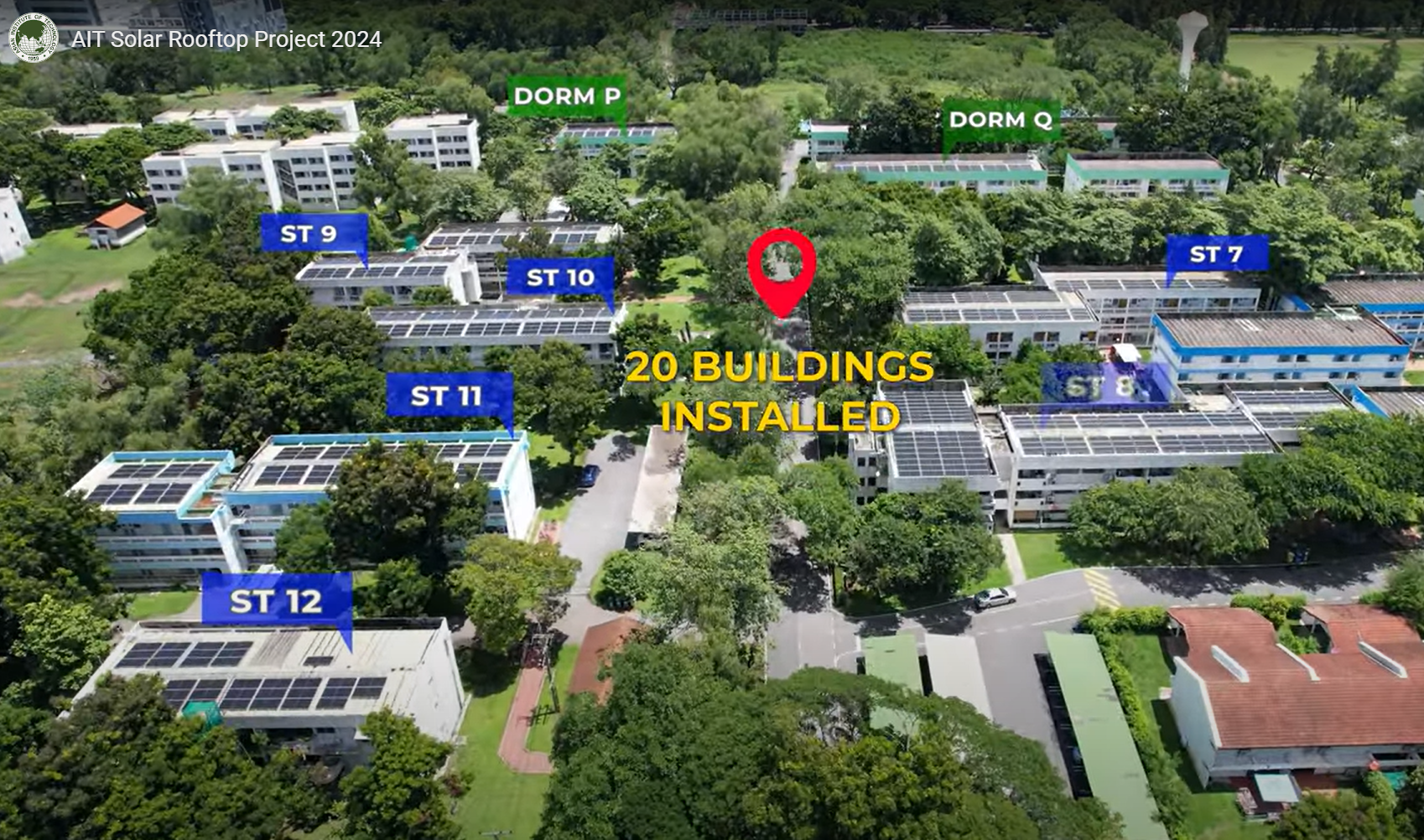AIT Commitment to Divestment and Carbon-Intensive Energy Transition
Key elements of this commitment include:
The “Solar Power in AIT” initiative clearly states: “Our divestment policy includes a shift from traditional electricity sources to solar power.
The “SDG 7 – Affordable and Clean Energy” evidence page confirms that AIT’s sustainability policy is “strongly aligned with the divestment of investments from carbon-intensive energy industries, specifically coal and oil.” Asian Institute of Technology
In our net-zero planning, we report a strategic action plan that includes phasing out carbon-intensive energy supply, managing campus emissions (Scope 1, 2 and 3) and moving toward renewable energy sourcing.

What this means in practice
We are actively reducing reliance on fossil fuel-based electricity and investing in solar rooftop projects (e.g., a new 1.5 MW solar rooftop project launched August 2024) to accelerate the energy transition on campus. We are currently bidding on 5 MW floating solar project, which would enable AIT to be 100% renewable powered sourced during day time, where plans are under way to go 100 % renewable which needs energy storage systems and considerable funding.
Our divestment stance means that AIT refuses new investments or partnerships in coal-fired or oil-based power generation that do not align with our carbon-reduction commitments.
By redirecting institutional resources toward renewable, low-carbon energy, we are aligning our financial and operational decisions with our environmental values and delivering on our sustainability goals.
Why this matters
This policy ensures that AIT not only teaches sustainability but practices it. Divesting from coal and oil-intensive industries sends a clear signal about the seriousness of our commitment. It also ensures that institutional capital — whether via investments, infrastructure contracts, or energy supply agreements — supports a trajectory toward net-zero, rather than being locked into high-carbon legacy assets.
.